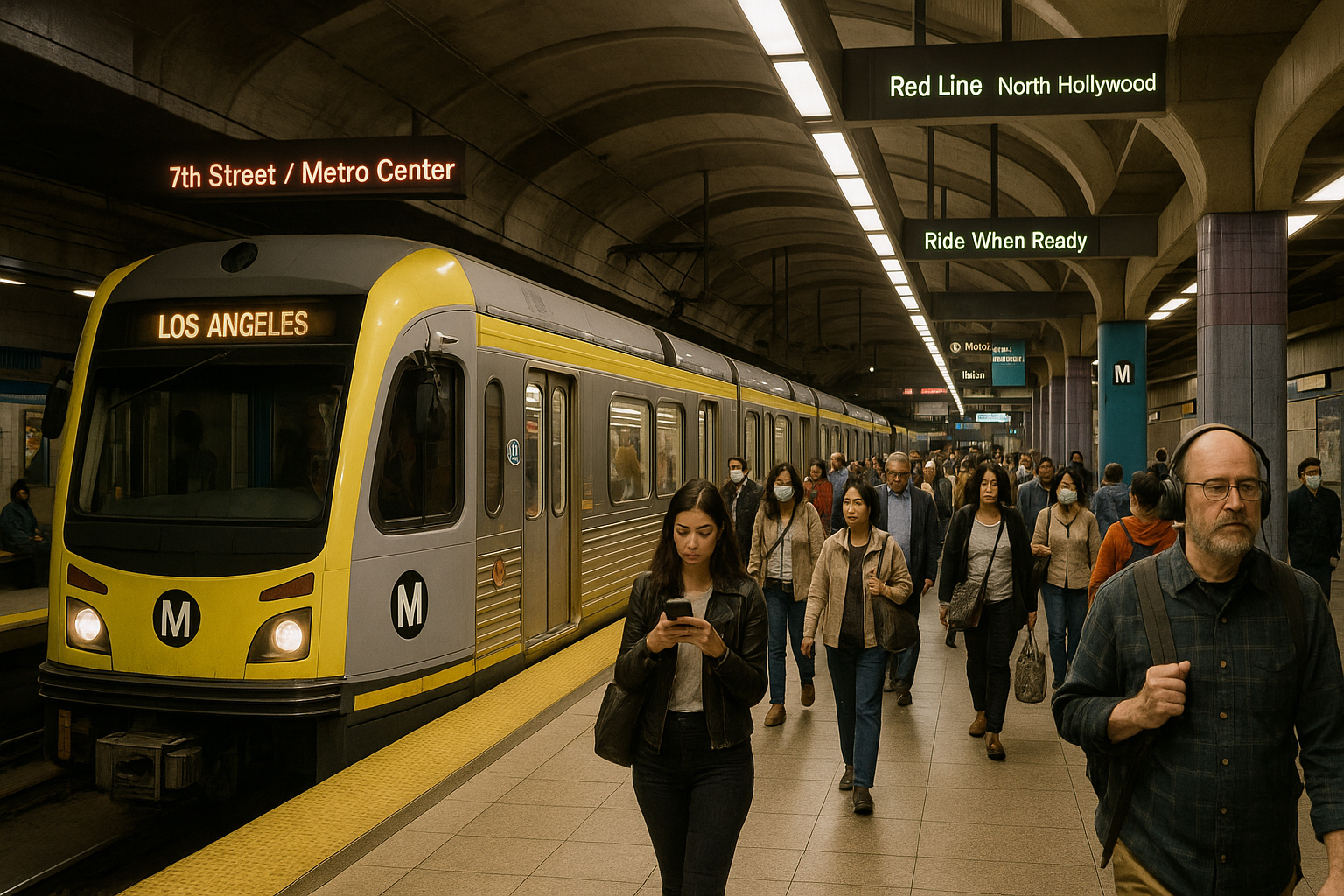Los Angeles Metro Rail: Serving SoCal
Published: June 30, 2025
By: Adam Burns
The Los Angeles Metro Rail system is an integral part of the sprawling and vibrant Southern California transportation network. Designed to alleviate the area's infamous traffic congestion and to provide an eco-friendly alternative to car commuting, the Metro Rail system serves as a crucial transportation artery for millions of residents and visitors each year.
This article delves into the history, structure, operations, and impact of the LA Metro Rail, providing a comprehensive overview of one of the United States’ most extensive mass transit systems.
History and Development
The origins of Los Angeles' rapid transit system date back to the early 20th century but faced various delays and challenges before becoming the extensive network it is today. In the late 1800s and early 1900s, Los Angeles was home to the Pacific Electric Railway, which was the largest electric railway system in the world. However, due to the rise of automobile culture, the system was dismantled by the 1960s.
Efforts to develop a modern public rail system began in the 1980s, responding to the rapid population growth and increasing traffic congestion. The Metro Rail system officially launched in 1990 with the opening of the Blue Line, now known as the A Line, connecting Downtown Los Angeles to Long Beach. Since then, the system has expanded significantly to include more lines and stations, with further expansions planned for the future.
Routes
LA Metro consists of six rail lines, each denoted by a color or letter, reaching across Los Angeles County with over 90 miles of track. Here is a brief summary of each of the lines:
A Line (Blue)
This line connects Downtown Los Angeles with Long Beach, extending 22 miles with 22 stations. It is one of the most heavily utilized lines in the network.
B Line (Red)
Running between Union Station in Downtown LA and North Hollywood, this line is pivotal for commuting in and out of the Valley. It features numerous stations in key locations such as Hollywood and Universal City.
C Line (Green)
Stretching 20 miles, it connects Norwalk in the southeast to Redondo Beach and provides a direct link to Los Angeles International Airport (LAX) through shuttle connection services.
D Line (Purple)
Serving the Wilshire corridor, this line offers vital connections from Downtown Los Angeles to Western LA.
E Line (Expo)
Connects Downtown LA with Santa Monica, is notable for its role in reconciling the disconnection between central Los Angeles and the coastal areas, particularly with its scenic route through Culver City.
K Line (Crenshaw/LAX)
The newest addition to the system, providing a crucial link from the Crenshaw District to LAX, enhancing connectivity to the South Bay.
Operations and Accessibility
The Metro Rail operates with a focus on accessibility and convenience. Trains generally run every 5-10 minutes during peak hours and every 15-20 minutes during off-peak times. The Metro Rail system aims to facilitate seamless integration with other forms of transportation, including buses, bikes, and rideshare options.
Accessibility is a priority within the Metro Rail system, featuring wheelchair accessibility, tactile paving for the visually impaired, and audible announcements for all crucial transit information. Stations are equipped with escalators, elevators, and ramps to ensure ease of travel for all riders.
Impact and Benefits
The Metro Rail has significantly impacted Los Angeles' urban landscape, offering a reliable alternative to freeway-dependent travel. By reducing the reliance on private vehicles, the Metro Rail helps to decrease greenhouse gas emissions and contributes to improved air quality, aligning with the city’s sustainability goals.
Furthermore, the transit system stimulates economic development by connecting people to employment hubs, cultural destinations, and educational institutions. Improved transit accessibility has sparked an influx of commercial and residential developments along rail corridors, enhancing urban density and vitality.
For residents, the Metro Rail system provides a cost-effective transportation option, helping to mitigate the financial burdens of owning and maintaining a vehicle in a city with high living costs. The TAP card payment system simplifies fare payment, offering a user-friendly experience for regular commuters and tourists alike.
Challenges and Future Developments
Despite its growth and success, Metro Rail faces challenges that need to be addressed. The most prominent issue is the first-mile/last-mile problem, where riders struggle to connect from their starting location to a train station or from the destination station to their final stop. Los Angeles' geography and layout often necessitate car travel for these short distances.
Safety on the rail system is another concern, with efforts continually underway to enhance both passenger safety and general security across the network's trains and stations.
Looking to the future, the Metro has ambitious plans for expansion. The "Twenty-Eight by '28" initiative aims to complete 28 transportation infrastructure projects in time for the 2028 Summer Olympics, including additional rail extensions and new lines. Noteworthy projects include the extension of the D Line, which will eventually run to Westwood, facilitating better access to the UCLA campus, and the East San Fernando Valley Transit Corridor.
LA Metro represents a pivotal step forward in providing sustainable and efficient public transportation within one of America's most car-centric cities. As it continues to expand and evolve, the Metro Rail offers a vital service that enhances connectivity, promotes environmental stewardship, and improves the quality of life for Los Angeles residents. Whether a seasoned commuter or a first-time visitor, the Metro Rail provides an excellent means to navigate the ever-bustling City of Angels.

